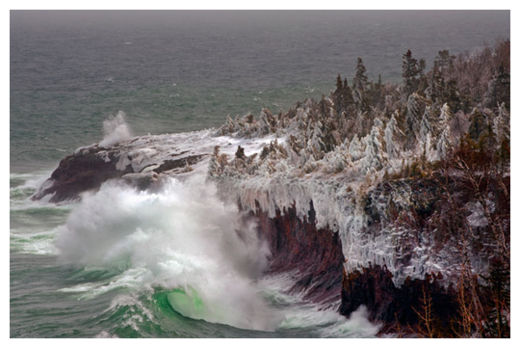
From urban and developed to remote and isolated, lakes around Minnesota contain a wide range of chemicals, including DEET, BPA, prescription drugs and even cocaine.
The findings, which came out of the first large-scale, systematic statewide study, suggest that it might be worth taking a wider look at bodies of water around the country for chemicals that have potential consequences for both the environment and human health.
For now, it's not clear how all of the chemicals are getting into Minnesota's lakes or exactly what effects they might be having on animals or people.
"It's not as though people should worry about going to the lake or taking their dogs to the lakes," said Mark Ferrey, an environmental scientist at the Minnesota Pollution Control Agency, which published the new report. "We're talking about how we're affecting lakes and rivers in ways that we probably don't understand yet."
"It's disquieting," he added. "We could be affecting fish populations or entire ecosystems in ways that are largely invisible to us."
Starting about a decade ago, in routine reconnaissance, Ferrey and colleagues began collecting surface waters from rivers and streams around Minnesota. As expected, analyses showed contaminants downstream from wastewater treatment plants and in other highly developed areas. But the researchers were surprised when chemicals also turned up in background samples collected in lakes with mostly untouched shorelines.
For the new study, which was part of a larger national project, sampling crews collected water from 50 Minnesota lakes, which were randomly chosen by a computer program that picked geographic coordinates. Samples were then analyzed in a Vancouver lab for suite of 125 chemicals.
Forty-seven out of 50 lakes contained at least one chemical on the list, the researchers reported. The bug-repellent DEET was the most widespread, turning up in 76 percent of the lakes sampled. BPA, a plasticizer that has been linked to reproductive and developmental problems, showed up in 43 percent of the lakes.
About a third of the lakes contained cocaine. A similar proportion contained the antidepressant amitriptyline. And the same number contained carbodox, an antibiotic used in pigs, which showed up even in lakes that were not surrounded by agricultural land. Triclosan, a chemical used in antimicrobial soaps, appeared in 14 percent of the lakes.
It's still a mystery how all of those chemicals are getting into lakes in the first place, but Ferrey suspects that some may be riding on specks of dust in the air. One study in Italy found that cocaine attaches to particles that are about 2.5 microns in size, and more cocaine floats through the air in places where cocaine use is more prevalent.
Concentrations of chemicals were very low, measurable as parts per trillion. But some research suggests that hormone-disrupting chemicals can have effects even at those low levels, Ferrey said. In one study in an experimental lake, dosing the water with an estrogenic contraceptive at five parts per trillion caused populations of fathead minnows and trout to plummet. When researchers stopped adding the chemical to the water, the fish rebounded.
"Even at very low doses," Ferrey said, "things that are hormones or hormone-like don't have to be toxic or poisonous to exert strong effects."
The new findings add important detail to previous work that had documented the presence of a smaller number of compounds in lakes around the country, said research hydrologist Dana Kolpin, head of the emerging contaminants and environment project at the U.S. Geological Survey in Iowa City.
For now, the new study remains a one-time snapshot of what's out there, he said. Future work will determine if levels change throughout the seasons and whether the findings are cause for concern.
"I want to be middle of the road," Kolpin said. "I don't want to say the sky is falling. But these certainly are compounds that wouldn't be occurring naturally. That means this warrants more research to see if there is something we need to be concerned about."



Reader Comments
to our Newsletter